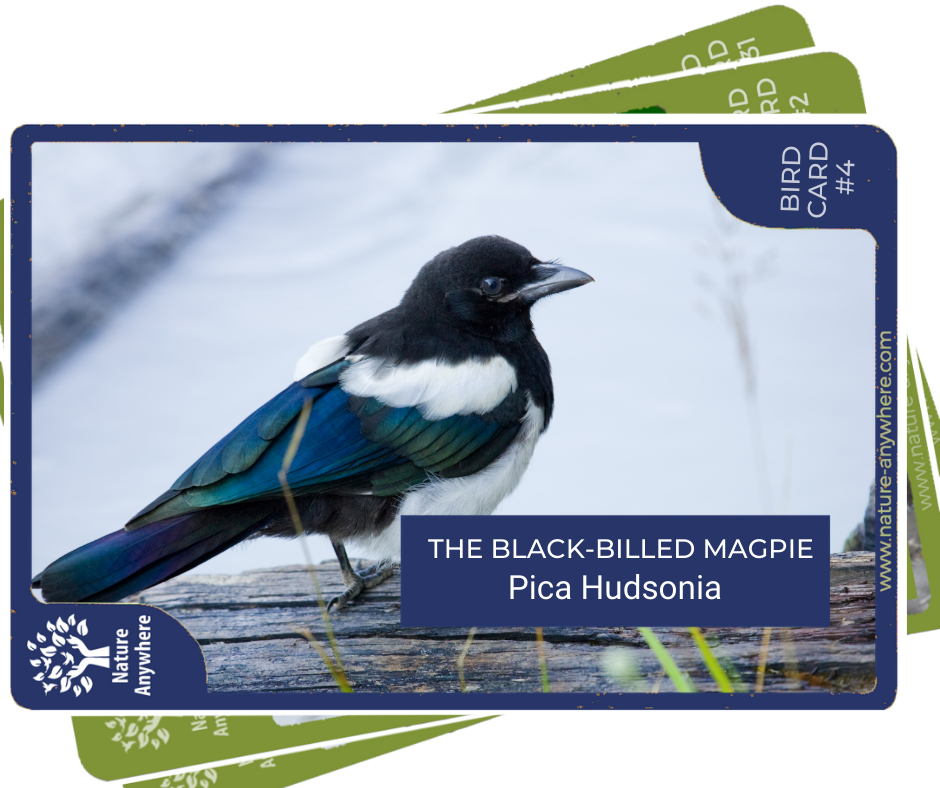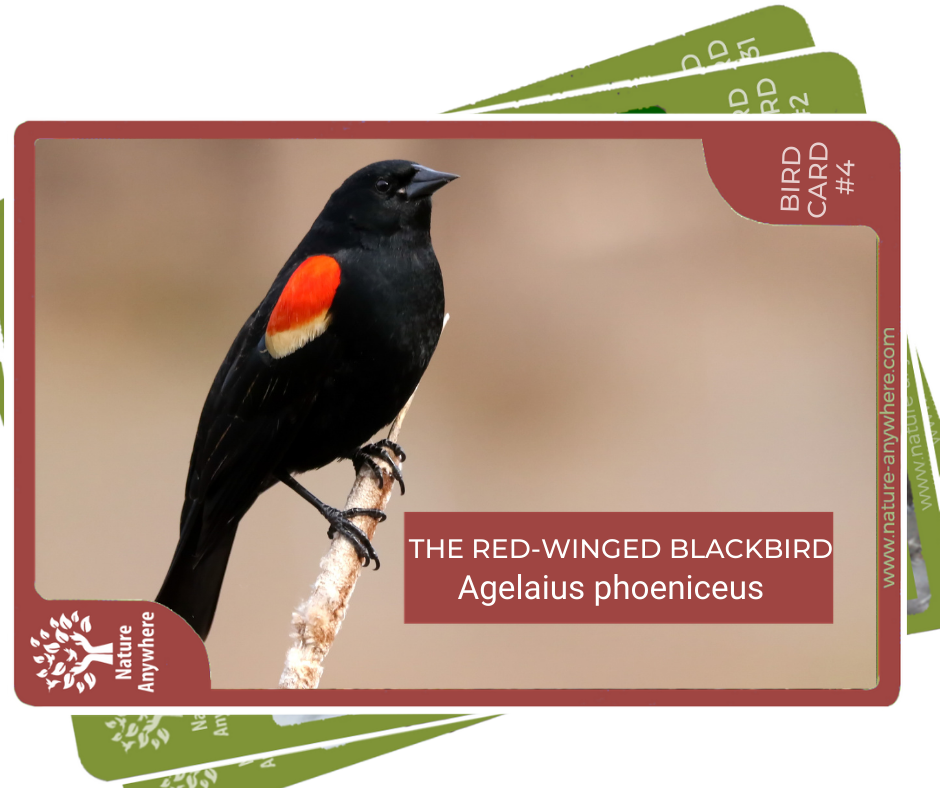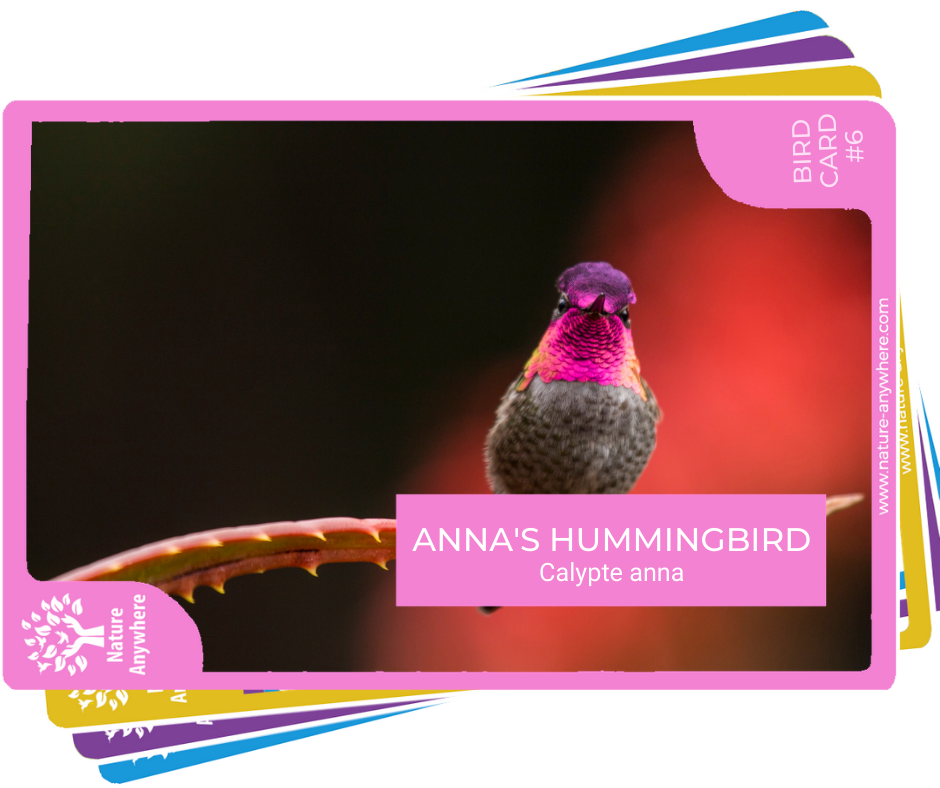
What a gorgeous sight to see a Black-billed Magpie spread its wings and fly over the western skies of North America. Even when perched on a road sign or fence post, it spreads its colorful wings and flaunts its long tail behind him.
This lavish display is its way of establishing territory. Instead of calling and chirping like the Red-winged Blackbird and other songbirds, it will perch atop trees and other high spots, flapping its wings and tail, or strutting around on the ground with a confident gait and swagger, raising its bill up in the air and flashing its white eyelids to establish dominance.
Black-billed Magpies are found mostly in the Western parts of the US such as northwest Alaska, the prairies of Canada, all the way to north Arizona, New Mexico, and western Texas. They avoid the deserts in the South and the humid East and roam in grasslands, woodlands, meadows, sagebrush and any open space near water. You will find them in barnyards and livestock areas. They are not afraid of humans.
They don't migrate in the winter but after the breeding season can form flocks and move more than 200 miles away from their roosting spot.
Black-billed Magpies are corvids (relatives of crows and jays) and are very social. They gather in flocks and use the power this gives them to attack a raptor or eat carrion left behind by a wolf, coyote or other hunters.
There was a time when Black-billed Magpies got themselves a bad name. They were considered vermin due to their feeding on poultry eggs and orchard crops. Farmers tried to exterminate them until they became protected under the Migratory Bird Treaty Act. Today they are common in urban areas as well as in the open country.
Black-bill Magpies can feel grief. An interesting phenomenon is the funeral. When a magpie discovers the body of a dead magpie, he will call out with all his might, as loud as he can, to attract other magpies to the area. Together they will call and squawk loudly for up to 15 minutes, leave grass “wreaths,” and then silently leave the scene. Some “funerals” have had up to 40 mourners.
Males live longer than females - 3.5 years on average for males, 2 years for females.
The oldest Black-billed Magpie found in the wild was recorded at 15 years and 1 month old. In captivity, a Black-billed Magpie reached the ripe old age of 20 years.
LOOKS

Black-billed Magpies are 18 to 23 inches long and weigh around 5 to 7.5 oz. They have black feathers on the head. The upper breast and tail has white patches as well as the rump and wings. The bill is also jet black, as well as the legs. Essentially they are black and white birds. However in a good light, you will see patches of an iridescent color that make their wings seem bronze, bluish-green or even violet.
Females are slightly smaller than the males with the same plumage coloring. The male and females are dimorphic unlike the rest of the corvid family.
Juveniles have a grayish iris and fleshy pinkish gape. (the interior of the mouth.) The upper-parts are light brown and the belly cream-colored. Their tails are a little more pointed.
EATS

Black-billed Magpies look for food in meadows and clearings, often ending up at the edge of different habitats or alongside a river or lake. Unlike most birds, they can use scent to locate food.
Like other corvids, the Black-billed Magpie’s diet is pretty expansive.
They eat wild fruit and grain and forage the ground for grasshoppers and beetles which they sometimes find by flipping cow dung. Magpies can land on a cow or moose and pick ticks off them.
They also kill small mammals like squirrels and voles and raid birds’ nests for their eggs.
BIRD FEEDERS
It is a myth that Black-billed Magpies kill other birds. Though they are predators they won't attack others if there is plenty of food around.
Black-billed Magpies may visit platform and suet feeders. They are fairly common in small towns and may visit large yards. For more ways to attract our magpies, click here.
SOUND
Black-billed Magpies are loud and vocal with a relatively low pitch. They are either harsh with an ascending call or have a raspy chatter.
BLACK BILLED LOVE
Some Black-billed Magpies mate for life, while others change partners every year. The courtship dance begins when the male flashes his wings and tail and the female shows she’s interested by begging him for food.
When breeding, the male guards the female to make sure she doesn’t mate with another male (although she may well go behind his back and mate with another bird after all!)
Black-billed Magpies breed from late March to early June. They usually have one brood per season but if something happens to the first brood they will have another. The nest is built in shrubs, utility poles and empty spaces such as deserted buildings.
It takes about 40 days to build the nest - but they use 1% of their daily energy.

The female lays between 6 to 9 grayish-green eggs with brown spots. After about 25 days, they will hatch one day apart from each other. The chick’s eyes won’t open for a week but they will already be flying around after about a month.
The parents feed the hatchlings until week 6 or 7, and shortly after 2 months, they will gain their independence.
FUN FACTS
- It is known and recorded historically that magpies have never feared people. They followed hunting parties of Plains Indians and ate the leftovers from bison kills. Lewis and Clark reported magpies boldly entering their tents to steal food while on their expeditions.
- The Black-billed Magpie is a nest predator, like many of the jays, although these eggs and nestlings make up only a tiny portion of its overall diet.
- Research studies have shown that magpies are one of the few animals that can recognize themselves in a mirror.
- The oriental magpie is the national bird of Korea. It is a relative to the Black-billed Magpie and looks very similar.
- A group of magpies has quite a few collective nouns, including a "charm", "gulp", "mischief", "tittering", and "tribe" of magpies.




1 comment
Alex
I rescued one, and now I can’t live without her. It’s like my soulmate, they are not only capable of grief, they are also capable of love. No, is not shitting on my head. But she sleeps on my shoulder, and I stay all day with the window open and she leaves and come back to my shoulder to cirp and purr like a cat. It’s the perfect pet. It’s like having a flying dog (it’s also barking), a soft wof woof when I tickle her.
Leave a comment
All comments are moderated before being published.
This site is protected by hCaptcha and the hCaptcha Privacy Policy and Terms of Service apply.